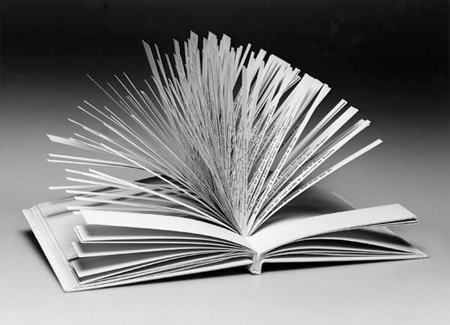
Another great article on BLDGBLOG check this shizzy out : a rather inflamed discussion about Twitter.
The BLDBLOG post has much to do with architecture contrary to the author's caveat. Twitter, a new form of digital communication allows the ability to communicate and respond while providing a multitude of possibilities within the broad realm of architecture. The OP-Ed by Maureen Dowd, from the NY TIMES, from where the original post initiates, however, has little concern with architecture and lacks substance. Dowd is a critic and has a history of writing for established publications - and yet her Twitter Op-Ed (more of a documented interview) does not reflect her abilities.
The way we engage one another within/without spaces, through written literature, oral language, imagery, art, voice, song etc. shapes the culture, society and structure of living. The documentation of history is an episodic collection of these engagements. This documentation takes a form, prior to the digital age these documents were created in analog format. The author of the blog 'HOW THE OTHER HALF WRITES: IN DEFENSE OF TWITTER' defends Twitter as a valid form of note taking because it has constraints.
"The fact that so many people now use Twitter as a public email system, or as a way to instant-message their friends in front of other people, is immaterial; Twitter is a note-taking technology, end of story. You take short-form notes with it, limited to 140 characters. The clichéd analogy here has been with Japanese haiku, but perhaps we might even reference the Oulipo: in other words, Twitter means that you are writing, but you are writing within constraints."
Oulipo: The group defines the term 'littérature potentielle' as (rough translation): "the seeking of new structures and patterns which may be used by writers in any way they enjoy." & "...he group devises new techniques, often based on mathematical problems..."
Oulipo Example Work: "Queneau's Cent Mille Milliards de Poèmes is inspired by children's picture books in which each page is cut into horizontal strips which can be turned independently, allowing different pictures (usually of people) to be combined in many ways. Queneau applies this technique to poetry: the book contains 10 sonnets, each on a page. Each page is split into 14 strips, one for each line. The author estimates in the introductory explanation that it would take approximately 200 million years to read all possible combinations."

Oulip Example Constraint: The "N+7" method: Replace every noun in a text with the noun seven entries after it in a dictionary. For example, "Call me Ishmael. Some years ago..." (from Moby-Dick) becomes "Call me islander. Some yeggs ago...". Results will vary depending upon the dictionary used. This technique can also be performed on other lexical classes, such as verbs.
The assumed defense of Twitter's capabilities supported by the Oulipo method of constraints is short winded and dwindles into a rant better suited for the pro's and con's of ANALOG vs.DIGITAL. The Oulipo method engages a creator in a series of constraints that they themselves define mathematically. The cited N+7 constraint and Queneau's Cent Mille Milliards de Poèmes are each analog methods. There is no digitalization required.
Question the digital constraints of Twitter. 1. electricity 2. computer with keyboard 3. free subscription to Twitter 4. web browser to support twitter 5. cell phone/iphone 6. Twitterer 7. Twittee 8. limit of 140 characters 9. misc. other constraint
How do these constraints enhance, exonerate, probe, develop and inspire creativity? I do not have a Twitter account and do not fully understand the desire for digital note taking? The creators have developed a widget capable of conveying notes, messages, alerts etc. My assumption: Twitter is an enhanced chat.
What is Twitter? From www.twitter.com
"Twitter is a service for friends, family, and co–workers to communicate and stay connected through the exchange of quick, frequent answers to one simple question: What are you doing?"
From the Twitter Blog:
"Every public update sent to Twitter from anywhere in the world 24/7 can be instantly indexed and made discoverable via our newly launched real-time search. What was that loud noise outside your apartment? Did you just feel an earthquake? What do people think about your company, your product, or your city? With this newly launched feature, Twitter has become something unexpectedly important—a discovery engine for finding out what is happening right now."
The BLDBLOG author continues the rant arguing that a ball point pen/journal are comparable to Twitter. A pen and a journal have constraints other than the physical nature of the object. If you use the pen to write/draw then all the ink is used eventually. If you use a journal for collage, post cards, drawing, folding etc. These constraints are independent of the constraints used for Twitter's defense. The author has created an argument to compare two separate objects. Digital Note Taking vs. Infinite variations of ideas. Variables of each form ANALOG vs. DIGITAL provide a drastically different set of parameters.
Thoughts? I have never used Twitter. Not that I don't intend to but I have plenty of paper to recycle and personally I'd much rather post my artwork and writing where people interact with real tangible spaces.








